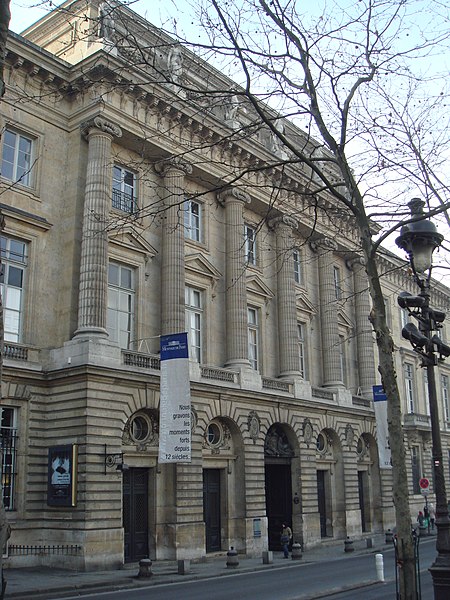Monnaie de Paris
864 establishments9th-century establishments in FranceBuildings and structures in the 6th arrondissement of ParisCoin stubsFrench museum stubs ... and 4 more
Manufacturing companies based in ParisMints (currency)Museums in ParisNumismatic museums in France

The Monnaie de Paris (Paris Mint) is a government-owned institution responsible for producing France's coins. Founded in AD 864 with the Edict of Pistres, it is the world's oldest continuously running minting institution. In 1973, the mint relocated its primary production to a facility in Pessac, and today the original facility in Paris, while still operational, functions primarily as a museum and is home to a collection of many ancient coins.
Excerpt from the Wikipedia article Monnaie de Paris (License: CC BY-SA 3.0, Authors, Images).Monnaie de Paris
Quai de Conti, Paris 6th Arrondissement (Paris)
Geographical coordinates (GPS) Address Website Nearby Places Show on map
Geographical coordinates (GPS)
| Latitude | Longitude |
|---|---|
| N 48.856608333333 ° | E 2.3390333333333 ° |
Address
Hôtel de la Monnaie
Quai de Conti 11
75006 Paris, 6th Arrondissement (Paris)
Ile-de-France, France
Open on Google Maps











